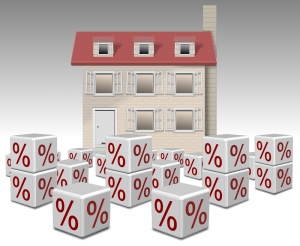UK Lending is Shifting and Impacting Home Buyers and Homeowners

The UK housing market continues to be the stage for shifting economic tides, as the latest figures from Nationwide Building Society have revealed a surprising dip in the average house price for August. According to the data, the average price of a UK home fell by 0.1% to £271,079 compared to July. This decline, though modest, stands in contrast to the forecasted 0.2% rise anticipated by a Reuters poll of economists. The annual pace of house price growth has also lost momentum, slipping to 2.1% in August from 2.4% in July. This cooling is taking place against a backdrop of high mortgage costs, persistent inflation, and the aftershocks of monetary policy shifts since the pandemic.
Nationwide’s chief economist, Robert Gardner, attributes the current softening in prices to higher borrowing costs that are squeezing buyers’ budgets. As Gardner observes, “House prices are still high compared with household incomes, making raising a deposit challenging for prospective buyers, especially given the intense cost of living pressures in recent years.”
This observation resonates across the market, as affordability remains one of the principal hurdles for potential homeowners. Even as house price growth moderates, the cost of buying a home is far from affordable for many.
Gardner further notes, “Combined with the fact that mortgage costs are more than three times the levels prevailing in the wake of the pandemic, this means that the cost of servicing a mortgage is also a barrier for many.”
The cost of borrowing has escalated dramatically since the Bank of England slashed its policy rate to 0.1% in the depths of the pandemic. While mortgage rates have come down from their peak in late 2022 and early 2023, they remain significantly elevated compared to the ultra-low rates of recent years. For many, the increase in monthly repayments makes the aspiration of homeownership feel remote.
The affordability challenge is compounded by inflation, which remains above the Bank of England’s target rate of 2.0%. As the cost of everyday essentials climbs, households are left with less disposable income to save for the crucial deposit needed to step onto the housing ladder. Stubborn inflation has also dampened expectations for interest rate cuts from the Bank’s Monetary Policy Committee (MPC) by the end of the year. In fact, only weeks ago, lenders were trimming their mortgage rates in anticipation of easing from the MPC. However, with inflation proving sticky and swap rates beginning to rise, lenders have recently started to withdraw some of their lowest-rate mortgage products.
Swap rates play a crucial role in shaping lender rates. A swap rate is essentially the fixed rate that lenders pay to financial markets to swap variable interest payments for fixed payments over a set period. When swap rates rise, the cost for lenders to fund fixed-rate mortgages increases, prompting them to adjust their offerings to borrowers. In recent days, rising swap rates have prompted lenders to pull some of their most competitive deals from the market. This, in turn, affects the ability of borrowers to secure lower fixed rates, adding another layer of difficulty for those seeking to manage their housing costs.
While the focus is often on first-time buyers and the affordability barriers they face, the challenges are not confined to those looking to purchase their first home. Homeowners whose five-year fixed-rate mortgage deals are coming to an end now face a significant increase in their monthly repayments. Many of these homeowners locked in their mortgages when the Bank of England’s base rate was at a historic low of 0.1%. The deals available at that time are simply not on offer today. As these fixed terms expire, households must contend with much higher mortgage rates, which can place serious pressure on their finances.
For those approaching the end of a fixed deal, experts strongly encourage shopping around for a new deal, either by remortgaging to a better rate or simply comparing quotes to understand how their payments might change. The alternative of allowing the mortgage to transition onto the lender’s standard variable rate (SVR) is rarely advisable. SVRs are typically much higher than market-leading fixed or tracker rates, and they can change at the lender’s discretion, making future payments unpredictable. By securing a new deal before their current term ends, borrowers can often avoid sharp increases in their monthly payments.
Even for those already on an SVR, or for homeowners who are unsure about the impact of current rates on their repayments, it is wise to seek out quotes and explore the full range of mortgage products on offer. Shopping around can reveal opportunities to remortgage at a lower rate or to fix payments for a set period, providing some certainty in a volatile market. With affordability issues affecting both buyers and existing homeowners, being proactive and informed is more essential than ever.
The UK housing market’s latest data from Nationwide underscores the challenges facing both buyers and homeowners. High house prices relative to incomes, increased mortgage costs, and persistent inflation continue to weigh on the market. As swap rates influence the cost of borrowing and lenders respond to economic uncertainties, both new and existing homeowners must navigate a more complex and costly landscape. For many, the best defence is to stay informed, shop diligently for mortgage deals, and seek advice to ensure that homeownership remains within reach, even as market conditions shift.



